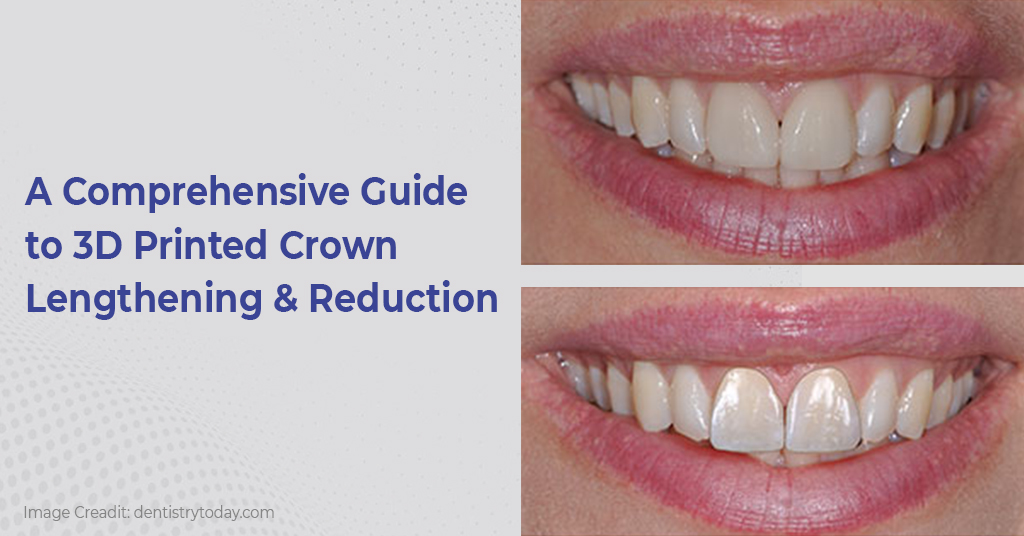Menu

The study titled ‘3D Printed Crown Lengthening and Reduction Guide’ was originally published by Dentistry Today.
In dentistry, digital workflows are being adopted and becoming very popular. Mainly due to the benefits it offers such as:
Computer-aided design (CAD) and Intraoral scanners are leading to the adoption of 3D printed models and virtual diagnostic files. Many pieces of research have highlighted that compared to conventional impressions, digital impressions are equally accurate. 3D printed guides have been utilized in dentistry for endodontics, implant placements, oral surgery, and endodontics.
This article highlights an advanced procedure that uses digital workflow to enhance the predictability and efficiency of treatment outcomes. CAD and Virtual smile design were used to create a 3D printed guide that served as a gingivectomy and preparation reduction guide.
CASE REPORT
A patient had an issue with a fractured veneer on the maxillary right central incisor. She was not satisfied with the porcelain veneers that were present on both the maxillary central incisors. She did not like the black triangle between her teeth and the square and short-shaped appearance.
After conducting a clinical examination, a fractured veneer was confirmed. Moreover, a space was identified in the middle of the interdental region along with a large ratio for both central incisors.
Treatment Planning
Various treatment options were discussed with the patient. They included gingivoplasty of the maxillary central incisors to improve the ratio of the width and height and placement of new veneers. Some alternative options were recommended as well. They included increasing the proportions of the adjacent anterior teeth and orthodontic treatment. The patient chose to go ahead with the new porcelain veneers and gingivoplasty.
Clinical Protocol
For this case study, a specific template was used to minimize the black triangle between the centrals and elongate the height of the crown. The edges of the incisal were maintained and the patient approved the design. Due to the virtual design, the dentist could communicate the challenge of the width-to-height ratio for the interdental space and central incisors.
With the help of the software, the dentist could also communicate the proposed teeth design with the lab. For cases that are simple, this procedure can be an efficient way to visualize various treatment options. With cases that are complex, a more sophisticated virtual smile design software can be utilized.
During the consultation, the dentist used an intraoral scanner to produce digital models. These models were then sent to the lab to develop a virtual wax-up for the central incisors and plan new positions for the gingival margins.
A crown lengthening guide was created with a 3D printer. This guide was later used to perform a gingivectomy procedure with the help of a soft-tissue laser. After removing the old veneers, the 3D printed guide was utilized to assess the reduction required to attain the needed prosthetic space for the new veneers.
Once the gingivectomy was completed, a final impression was sent to the lab for creating a lithium disilicate veneer. The design was based on the virtual wax-up. The patient was called for another session to bond the veneers to her teeth.
CONCLUSION
As you can see, virtual smile design technology offers predictability, efficiency, and precise communication. When the patient can visualize multiple treatment options in the context of their appearance, they are more confident of the result and engaged in their care. Moreover, having detailed information can also enable patients to ask more questions to their clinicians. It also makes the communication between the lab technician and clinician smoother. This can significantly improve the treatment’s efficiency and lead to predictable outcomes.
Source:


| PRODUCTS | QTY | PRICE | VALUE in INR |
|---|
| PRODUCTS | QTY | PRICE | VALUE in INR |
|---|